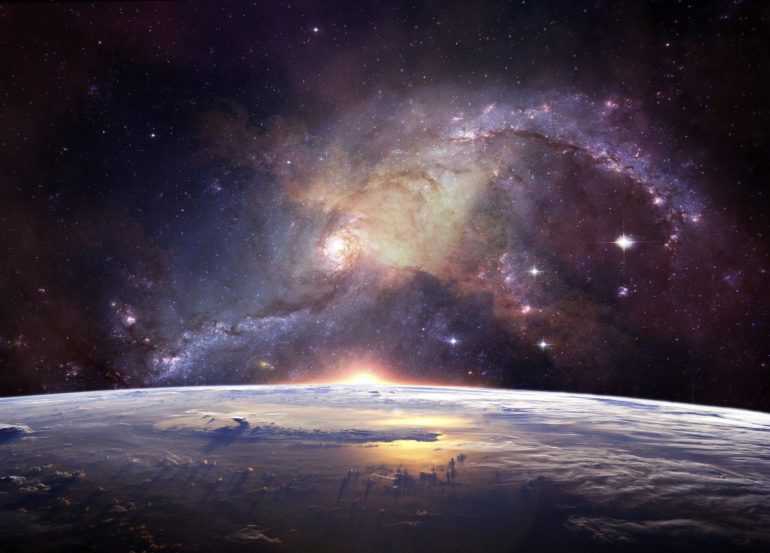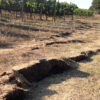Four newly discovered planets could help scientists learn more about how the Earth and our solar system developed during their ‘teenage’ years. The exoplanets reside around 130 light years away and orbit two known stars, TOI 2076 and TOI 1807, which can be found in the constellations of Boötes and Canes Venatici, respectively.
Both are K-type dwarf stars, more orange than our own sun, and are believed to have been born in the same gas cloud around 200 million years ago.
Astronomers are interested in the four new worlds—each either two, three or four times the size of the Earth—as they are in the early stages of creation and could reveal more about how young planets and planetary systems evolve.
They were discovered by researchers from Loughborough University and over 25 other institutes around the world. The project has been led by NASA using data from NASA’s Transiting Exoplanet Survey Satellite (TESS).
“The planets in both systems are in a transitional, or teenage, phase of their life cycle,” said Christina Hedges, an astronomer at the Bay Area Environmental Research Institute in Moffett Field, in California, and NASA’s Ames Research Center in Silicon Valley.
“They’re not newborns, but they’re also not settled down. Learning more about planets in this teen stage will ultimately help us understand older planets in other systems.”
Loughborough student Alex Hughes first brought TOI 2076 to astronomers’ attention in 2019, while working on an undergraduate project looking for light curves—he has since graduated with a bachelor’s degree in physics.
Using the TESS data, he found that light from the star dipped periodically—possibly indicating the presence of exoplanets.
After contacting Dr. Hedges to highlight the find, a multinational collaboration of scientists and astronomers discovered three worlds orbiting the star.
The innermost planet, TOI 2076b, is about three times Earth’s size and circles its star every 10 days.
Outer worlds, TOI 2076c and d, are a little over four times larger than Earth, with orbits exceeding 17 days.
The second star, TOI 1807, hosts only one known planet, TOI 1807 b, which was first detected by NASA in 2020. It is about twice Earth’s size and orbits the star in just 13 hours.
Alex, who is now studying for a Masters in physics at UCL, said: “Discovering a planetary system that exists in this transitional ‘teenage’ period gives us a chance to test our models of this early evolution period and probe some of the questions we still have.
“I believe that TOI 2076 and TOI 1807 will help us better understand early formation and evolution processes, such that we can understand how our own solar system came to be.”
Dr. Shaun Atherton, of Loughborough’s School of Science, was also involved in the identification and was Alex’s project supervisor.
He added: “This discovery is important for two reasons. One is the age of the two stars. Investigating both the stars and their planets at this stage of evolution will give insights into our own solar system’s early evolution. Second is the common origin of the two stars. Born in the same gas cloud, but having since moved apart, we can learn about how these two star systems have developed separately.”
Scientists are currently working to measure the planets’ masses, but interference from the hyperactive young stars could make this challenging.
According to theoretical models, planets initially have thick atmospheres left over from their formation in disks of gas and dust around infant stars. In some cases, planets lose their initial atmospheres due to stellar radiation, leaving behind rocky cores. Some of those worlds go on to develop secondary atmospheres through planetary processes like volcanic activity. The ages of the TOI 2076 and TOI 1807 systems suggest that their planets may be somewhere in the middle of this atmospheric evolution.
TOI 2076b receives 400 times more UV light from its star than Earth does from our own sun—and TOI 1807b gets around 22,000 times more. If scientists can discover the planets’ masses, the information could help them determine if missions like NASA’s Hubble and upcoming James Webb space telescopes can study the planets’ atmospheres—if they have them.
A paper describing the findings has been published in the Astronomical Journal.
Astronomers uncover evidence that there could be many more Earth-sized planets than previously thought
More information:
Christina Hedges et al, TOI-2076 and TOI-1807: Two Young, Comoving Planetary Systems within 50 pc Identified by TESS that are Ideal Candidates for Further Follow Up, The Astronomical Journal (2021). DOI: 10.3847/1538-3881/ac06cd
Provided by
Loughborough University
Citation:
Newly discovered planets could help scientists learn more about Earth’s ‘teenage’ years (2021, July 13)
retrieved 13 July 2021
from https://phys.org/news/2021-07-newly-planets-scientists-earth-teenage.html
This document is subject to copyright. Apart from any fair dealing for the purpose of private study or research, no
part may be reproduced without the written permission. The content is provided for information purposes only.



